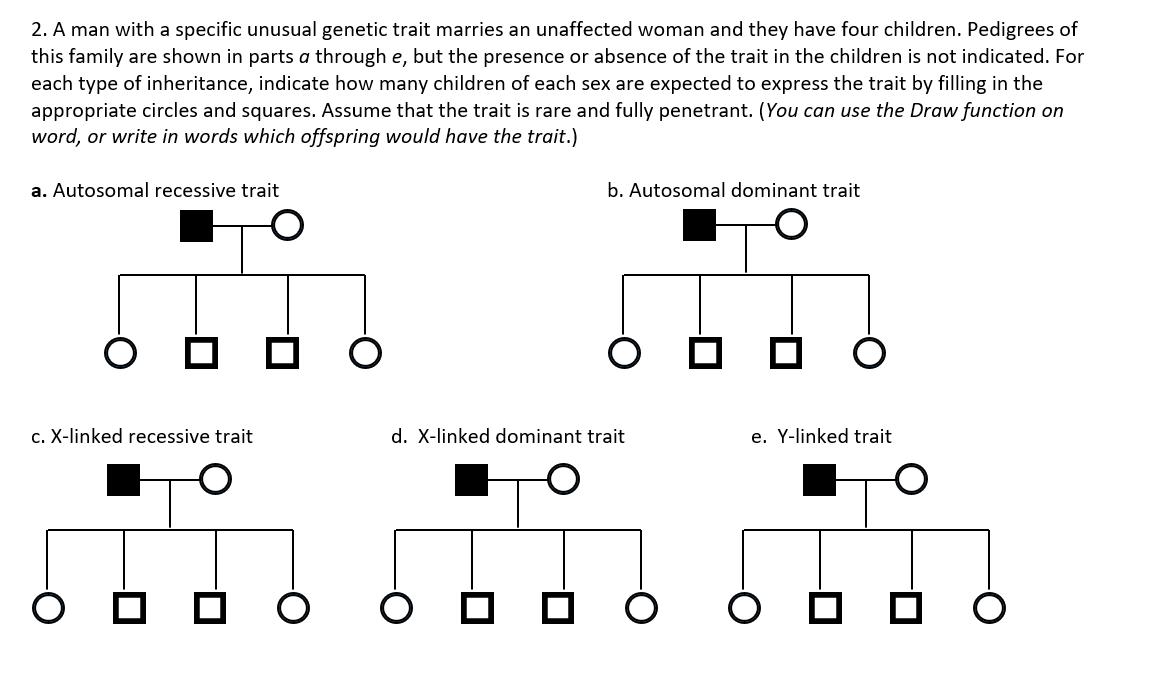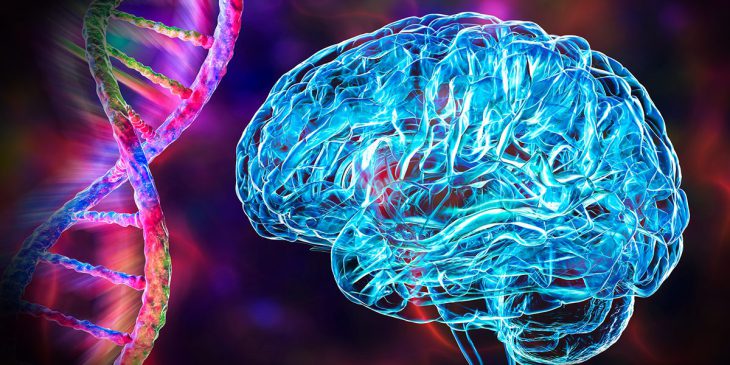Biology Biology questions and answers 2. A man with a specific unusual genetic trait marries an unaffected woman and they have four children. Pedigrees of this family are shown in parts a through e, but the presence or absence of the trait in the children is not indicated.
Solved 2. A man with a specific unusual genetic trait | Chegg.com
A man with a specific unusual genetic trait marries an unaffected woman. For each type of inheritance, place the pedigree that would result from the cross. Assume the trait is fully penetrant and rare.

Source Image: pacb.com
Download Image
A man with a specific unusual genetic trait marries an unaffected woman. For each type of inheritance, place the pedigree that would result from the cross. Assume the trait is fully penetrant and rare.

Source Image: medium.com
Download Image
precision medicine – NIH Director’s Blog Feb 8, 2023A man with a specific unusual genetic trait marries an unaffected woman and they have 4 children. Pedigrees of this family are shown in parts a) through e), but the presence or absence of the trait in the children is not indicated. For each type of inheritance indicate how many children of each sex are expected to express the trait by filling

Source Image: the-scientist.com
Download Image
A Man With A Specific Unusual Genetic Trait
Feb 8, 2023A man with a specific unusual genetic trait marries an unaffected woman and they have 4 children. Pedigrees of this family are shown in parts a) through e), but the presence or absence of the trait in the children is not indicated. For each type of inheritance indicate how many children of each sex are expected to express the trait by filling Monozygotic twins have 100% genetic identity, whereas dizygotic twins have 50% genetic identity. Any trait that is completely genetically determined will therefore be 100% concordant in monozygotic twins and 50% concordant in dizygotic twins. … A man with a specific unusual genetic trait marries an unaffected woman and they have 4 children
Uncovering Rare Disease Genetic Pathways with Global Biobanks | The Scientist Magazine®
A man with a specific unusual genetic trait marries an unaffected woman and they have four children. Pedigrees of this family are shown in parts a a through e e, but the presence or absence of the trait in the children is not indicated. blood – NIH Director’s Blog

Source Image: directorsblog.nih.gov
Download Image
Opinion: Big data scientists must be ethicists too | Broad Institute A man with a specific unusual genetic trait marries an unaffected woman and they have four children. Pedigrees of this family are shown in parts a a through e e, but the presence or absence of the trait in the children is not indicated.

Source Image: broadinstitute.org
Download Image
Solved 2. A man with a specific unusual genetic trait | Chegg.com Biology Biology questions and answers 2. A man with a specific unusual genetic trait marries an unaffected woman and they have four children. Pedigrees of this family are shown in parts a through e, but the presence or absence of the trait in the children is not indicated.

Source Image: chegg.com
Download Image
precision medicine – NIH Director’s Blog A man with a specific unusual genetic trait marries an unaffected woman. For each type of inheritance, place the pedigree that would result from the cross. Assume the trait is fully penetrant and rare.

Source Image: directorsblog.nih.gov
Download Image
I will feel actual rage.’ Unusual responses to kind touches could help explain autism traits | Science | AAAS A man with a specific unusual genetic trait marries an unaffected woman and they have four children. Pedigrees of this family are shown in parts (a) through (e), but the presence or absence of the trait in the children is not indicated.

Source Image: science.org
Download Image
Scientists Discover Novel Mechanism that Causes Rare Brain Disease – UPMC & Pitt Health Sciences News Blog Feb 8, 2023A man with a specific unusual genetic trait marries an unaffected woman and they have 4 children. Pedigrees of this family are shown in parts a) through e), but the presence or absence of the trait in the children is not indicated. For each type of inheritance indicate how many children of each sex are expected to express the trait by filling

Source Image: inside.upmc.com
Download Image
Best books about genetics | IDT Monozygotic twins have 100% genetic identity, whereas dizygotic twins have 50% genetic identity. Any trait that is completely genetically determined will therefore be 100% concordant in monozygotic twins and 50% concordant in dizygotic twins. … A man with a specific unusual genetic trait marries an unaffected woman and they have 4 children

Source Image: idtdna.com
Download Image
Opinion: Big data scientists must be ethicists too | Broad Institute
Best books about genetics | IDT A man with a specific unusual genetic trait marries an unaffected woman. For each type of inheritance, place the pedigree that would result from the cross. Assume the trait is fully penetrant and rare.
precision medicine – NIH Director’s Blog Scientists Discover Novel Mechanism that Causes Rare Brain Disease – UPMC & Pitt Health Sciences News Blog A man with a specific unusual genetic trait marries an unaffected woman and they have four children. Pedigrees of this family are shown in parts (a) through (e), but the presence or absence of the trait in the children is not indicated.